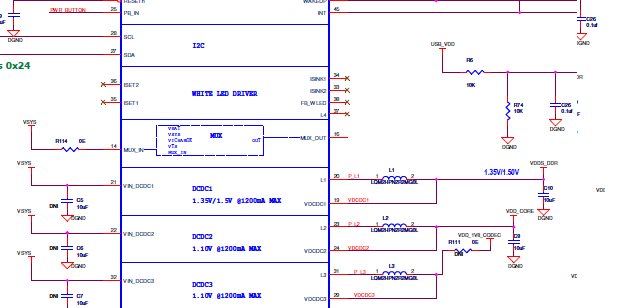Hi Team,
Can you please assist my customer with their inquiry below?
Thanks for the help!
________
we are seeing some failures with the DDR on the board. In one of these boards, we detected the DDR voltage to be 2.9V yesterday. It is not always that high, but it seems to happen randomly on some units. Here are the details.
1. PMIC used - TPS65217D
2. DDR used - Hynix H5TC4G63CFR
3. The PMIC has a default output voltage of 1.35V on DC-DC1. This is routed to the DDR. The rail is not modified by SW.
Can you think of any reason why the PMIC can source voltage as high as 2.9V? We have only one known observation, but we have seen several DDR failures.


